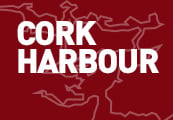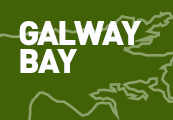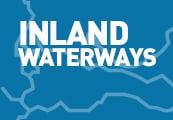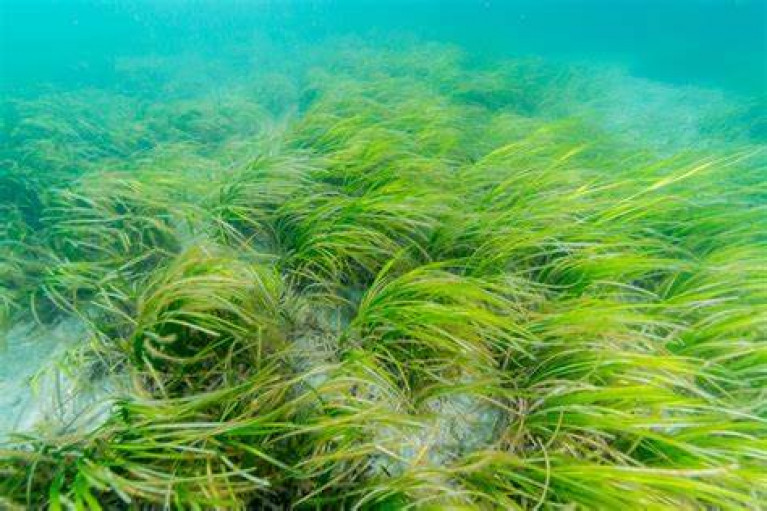Displaying items by tag: Coastwatch
Coastwatch Hosts Workshop on Single Use Plastic Eradication
Progress on eradicating single use plastics which are so harmful to the marine environment will be discussed at a workshop hosted by Coastwatch later this month.
The “Coastwatch and more4nature Earth Day 2024 workshop” will celebrate the disappearance of most items banned under the single use plastics directive since June 2021.
The Coastwatch marine litter citizen science surveys' tracking will be discussed, along with single-use plastics that are “ban-resistant.”
Law and law enforcement, the campaign route and “good practice examples” will also be discussed by contributors from the EU’s environment directorate, the Department of the Environment, the Environmental Protection Agency and environmental NGOs.
The event will take place in Europe House, 12-14 Lr Mount Street, Dublin, on April 22nd from 9 am to 1 pm. Booking is essential, and more information is available from Karin Dubsky at email [email protected]
Coastal nature protection, management and restoration is the theme of a Coastwatch seminar later this month.
The seminar on January 24th in Trinity College, Dublin will focus on seagrass habitat and the Nature Restoration Law.
It will also discuss progress of the Government’s marine protected area (MPA) legislation.
“We have entered a key year for biodiversity,”Coastwatch co-ordinator Karin Dubsky says.
“ In 2023, reports by the Citizen Assembly on biodiversity loss and then the Joint Committee on the Environment and Climate Action were published,” she recalled.
“The EU Nature Restoration Law should pass in February/March and the Irish MPA law follow soon afterwards,” she said.
“The Nature Restoration Law and ongoing measures to designate, manage and restore Natura 2000 sites, offer new opportunities for public participation and citizen science,” she said.
“This Coastwatch seminar will provide an opportunity to review these initiatives against the needs in the coastal zone, where nature is struggling,” she said.
Two sessions will focus on seagrass, as one critically important inshore habitat, and the keynote address will be given by Dr Marcial Bardolet, head of the Posidonia Seagrass Surveillance Service, (IBANAT) Balearic Islands, Spain.
Registration is essential here
Coastwatch Publishes Autumn Survey Results Online This Evening
Coastwatch Environmental NGO is due to release the results of its autumn survey this evening (Monday, Dec 4).
Findings from almost 700 survey sites in the Republic will be presented at an online event, which can be viewed on Zoom.
Coastwatch has paid tribute to surveyors and citizen scientists who had to “duck and dive” between weather challenges.
“Storms and much higher rainfall than average surveys have coloured several aspects of our results,” it says.
“With COP 28 in progress and local authorities drafting climate action plans, it is timely to consider what we need to do to better cope with such events,” it says.
In-person events are also due to take place on December 10th and 11th in Dublin.
More details are on the Coastwatch website, and registration for this evening’s autumn survey results on Zoom is here
Coastwatch Appeals for Citizen Science Volunteers for Annual Shore Survey
Coastwatch is appealing for citizen scientists to join its annual shore survey, which runs until mid-October.
Already, three volunteer surveyors have identified seagrass beds and meadows in counties Wexford, Dublin and Galway.
Some shorelines which had suffered plastic pollution after bad weather are also reportedly relatively cleaner or free of plastic, according to Coastwatch co-ordinator Karin Dubsky.
However, huge numbers of dying cockles have also been reported on Duncannon shore, Co Wexford, while carpets of green algae and sludge layers have been reported in parts of Dublin Bay and west Cork.
The survey involves volunteers from all walks of life who select 500 metres of shore as a survey unit.
The “eco-audit” of the selected area takes about an hour, during low tide, with friends or family.
“College and school groups, scouts and kayakers are also welcome to join,” Dubsky said.
“Weather permitting the survey effort will peak next weekend at the lowest tides,” she said.
All the required materials, except for water test kits, are on the Coastwatch website where survey sites can also be booked. Coastwatch regional co-ordinators can also help newcomers and groups, she says.
Details on participation involve the following steps, she says:
- 1. Chose a 500m survey unit and book it online www.coastwatch.org
- 2. Read the survey form and guide notes and download ID posters for marine life.
- 3. Join an online training or field work group session if you are new or would like to refresh. Next online session is Mon 25th Sept at 1800 hours.
- 4. Check your shore around low tide and record your findings in photos/on survey form.
- 5. Report back on new phone app, or computer input forms or by posting your results to us.
“We then collate and analyse data to share and discuss it in Trinity College Dublin on December 23rd,” she says.
“Coastwatchers are also invited to an international workshop to plan follow up action,” she says.
She says that Coastwatch is grateful to the Department of Housing marine unit for extra support this year.
A cross-border survey for Lough Foyle is planned for Sunday, Oct 1st.
More details are here
Coastwatch Appeals for Volunteers for Annual Month-Long National Shore Survey
Coastwatch has appealed for volunteers to join its annual autumn shore survey, which runs from mid-September to mid-October.
“This is now one of the longest standing citizen science projects in Ireland,” Coastwatch founder Karin Dubsky says.
” It’s a basic eco-audit of the shore carried out around low tide between Sept 15th and Oct 15th,” she says.
“You can go out as a group, divide tasks between you and cover long dune stretches in one sweep, having fun at the same time; or you go in pairs or alone to a favourite quiet spot,” Dubsky explains.
 The Dublin Bay shoreline will be part of the Coastwatch survey Photo: Karin Dubsy
The Dublin Bay shoreline will be part of the Coastwatch survey Photo: Karin Dubsy
“Either way, you are carefully observing, testing any streams you might cross and then report back on the state of that shore,” she says.
The annual citizen science audit started in 1987, with The Irish Times publishing a pull-out survey page.
It is now largely online with an accessible GIS map to choose sites to survey once between Sept 15th and Oct 15th, Dubsky says.
Volunteers book their site on an interactive map and download materials, or ask Coastwatch for these, Dubsky says.
They can “zig-zag” their chosen 500m of shore around low tide to record and report their findings from erosion to stream water quality, using test kits, and record key animals and plants along with waste and litter, she explains.
Micro litter can also be recorded, using a Coastwatch developed app, Dubsky says.
The first results will be presented in early December at Trinity College Dublin.
 The Bull island lagoon, Dublin Bay with wet wipes close to an outflow pipe Photo: Gereon Guenter
The Bull island lagoon, Dublin Bay with wet wipes close to an outflow pipe Photo: Gereon Guenter
Dubsky says training is provided for new volunteers, and regional coordinators are planning joint survey events to cover some areas really well.
‘This year, we focus on the quality of small streams, seagrass and on litter which would be better addressed by prevention and law than by clean-ups,” Michael Walsh of the Coastwatch team says.
“Small coastal streams may not look impressive but can host fish like seatrout and eel,” John Cullen, one of the Coastwatch team scientists, explains.
“In a training session last week, we checked a tiny stream flowing through Tintern Abbey walled gardens, Co Wexford”, Dubsky says.
“It was full of life and young sea trout are regularly observed here. We would love to mark such streams with big smiley faces on our maps and help restore other streams which we find in a dead or sad state,” she says.
‘With bird flu hitting many seabird colonies, we are now also asking for photographs and to report dead birds to DAFM using the Avian Flu reporting app or hotline so they can pick up and test for flu,” she says.
This will be the third year of recording COVID-related litter, and the first full year since government restrictions on a range of single-use plastics (SUP) has been implemented.
A three-year snapshot of Covid-related litter and SUP plastic will be published in December, she said.
All materials are on the Coastwatch website www.coastwatch.org or available from coordinators.
Inland Fisheries Ireland investigating Claim by Coastwatch That Local Authority Using Chlorine to Treat Local Streams
Inland Fisheries Ireland (IFI) says it is investigating a “very concerning” claim by Coastwatch that a local authority is chlorinating local streams which flow into a popular southeast beach.
Coastwatch spokeswoman Karin Dubsky says that children are at risk, along with stream life, due to the use of sodium hypochlorite to disinfect water flowing into a designated bathing water area at Dunmore East, Co Waterford.
Coastwatch has filed a report on the issue to the Environmental Protection Agency (EPA).
In its report to the EPA, Coastwatch says that the water quality in the two streams is poor or not dependable, and “apparently has been problematic for decades”.
 Coastwatch spokeswoman Karin Dubsky
Coastwatch spokeswoman Karin Dubsky
It notes that authorities use this disinfection practise to kill faecal microbes and protect the health of bathers and children playing in the stream.
“However it also kills all stream life and exposes small children playing in the stream mouth to chlorine vapours and chlorinated stream water, which can have significant health effects,” it says.
“There are no warnings to the public to take this risk into account. Furthermore, the drip sites – especially the westerly one - are easily accessible to exploring children. Contact with a drip can result in serious burns and possible loss of eyesight,”it says.
“While this appears to be contrary to the Water Pollution Act 1977 Section 3 and other legislation, Coastwatch was told first verbally and then in writing that it would continue for public health reasons,” it says.
Waterford City and County Council said it disputes Coastwatch Ireland’s claim that it is in breach of the Water Pollution Act.
“Two streams flowing into Dunmore East bathing area are chlorinated during the summer bathing season and have been for a number of years,” Waterford City and County Council said in a statement.
“This is due to diffuse and unidentified point source pollution sources upstream of the beach. The chlorine is driven off by the motion of the water and as such is unlikely to affect the flora and fauna in the bay and certainly not as much as some beach users leaving their rubbish, discarded plastics and other waste,” it said.
“The stream is chlorinated upstream of the culvert to the beach, primarily because children tend to play in the stream despite notices being erected advising adults/parents that it is unsafe to do so,” the local authority said.
“The purpose of the chlorination plant is primarily to protect human health from the impact of diffuse pollution sources further upstream,” it said.
Inland Fisheries Ireland said it had received communication last week from the EPA on the issue.
“The issues raised are very concerning, and Inland Fisheries Ireland will investigate the matter immediately, from a fisheries perspective,” it said.
It asked members of the public to report any suspected water pollution incidents to its new confidential hotline number on 0818 34 74 24, which is open 24 hours a day.
‘Public Participation Will Be Key’ to Success of Marine Spatial Planning Laws Says Coastwatch as Annual Irish Coastal Survey Continues
Coastwatch has welcomed the promise of greater protections for sensitive maritime areas in the Marine Spatial Planning Bill as it continues its annual shoreline survey.
As reported in The Irish Times, the environmental group’s coordinator Karin Dubsky said “public participation will be an integral part” of the process when the bill, which was published last month, passes into law.
Hundreds of volunteers are already deep into the four-week survey of Ireland’s 7,500km coastline, which continues till Friday 15 October.
This year Coastwatch is making a special appeal for farmers and coastal landowners to get involved to record the status of seaside habitats.
“Most of Ireland’s of shore is owned by farmers, yet we rarely hear how coastal farmers and how they are dealing with climate change and sea level rise,” Cork Coastwatch coordinator Bernie Connolly said.
The Irish Times has more on the story HERE.
Eels the Focus of World Rivers Day School Field Trip in Waterford
Waterford inshore fisherman Sean Doherty will share his knowledge of eels with primary school children in Passage East, Waterford to mark World River Day this week.
The students will be given a demonstration on nets and eel tagging at Cheekpoint harbour, where the rivers Barrow, Nore and Suir - the so-called “three sisters” – meet.
They will also participate in a search for eels under stones and will be shown how eels are released back into the water, according to Coastwatch coordinator Karin Dubsky.
World Rivers Day takes place annually on the fourth Sunday of September, but this event is being held on Thursday to allow students to mark the occasion.
 World Rivers Day
World Rivers Day
It is being hosted by Coastwatch and Inland Fisheries Ireland, with the support of the Local Authorities Water Programme.
The focus is on eels, as they are now a “red-listed” species at risk throughout Europe, due to a collapse in numbers, Dubsky said.
“All eel fishing in the Republic of Ireland has been closed for a number of years,” she said.
Pupils will hear how the “diachronous” species spawn in the Sargasso Sea and how they arrive on European shores where they mark several live stages.
“We will look at where eels live, monitoring and what might be done to restore eel habitat and increase survival in Ireland,” she said.
Coastwatch Fight to Save Vital Native Species Continues
A natural marine resource more important than the rain forests is in danger of dying out unless funding is provided to help protect it.
Zostera Marina is a type of seagrass which grows in the inshore areas of south Wexford, it supports biodiversity, cleans the surrounding water and helps take carbon dioxide out of the atmosphere. However, local seagrass habitats are under threat from the invasive species Sargassum muticum, or ‘wire weed’, which stunts its growth and eventually kills it.
Mick Berry of Coastwatch and local environmentalist Karin Dubsky invited members of the public and government officials to St Patrick’s Bridge in Kilmore Quay to highlight the importance of seagrass and the urgent need to safeguard its future. “England has already lost 92 per cent of its sea grass and Ireland’s levels are patchy, we don’t know how much is left,” said Mick. “We need to map it around the coast of Wexford and identify where it might be. People don’t know what it looks like, even the people living here in Kilmore, they get it mixed up with green algae. At the moment no one is doing anything to preserve it, there’s a lot of red tape holding everything up.”
As a coastal county, Wexford is at the forefront of this fight to protect this vital plant. “Seagrass is one of the top plants for sequestering ocean carbon, its way ahead of the rain forest, it’s so important and it’s right on our doorstep, there’s lots of it in Wexford,” explained Mick. “We’re pushing for funding so we can go out and find it. But we need divers to go and look for it in certain areas, the government department should be doing this not us, we’re doing it out of love.”
Salvation may yet be at hand in the form of the new Maritime Area Planning Bill which is currently before the Oireachteas and includes plans to give local authorities a role in managing inshore coastal areas. It was published on June 29 and coincided with the launch of the National Marine Planning Framework, Ireland’s first national framework for managing marine activities.
Wexford People has more.
Maritime Area Planning Bill is Not Solely Designed “to Help the Offshore Renewable Sector Get What it Needs”, Warns Coastwatch's Karin Dubsky
The new Maritime Area Planning Bill is not solely designed “to help the offshore renewable sector get what it needs”, Coastwatch co-ordinator Karin Dubsky has warned.
The legislation, which marks a first for the State in marine planning, is “for all of us, and we have to watch that there isn’t a shortcut”, Dubsky said.
Her environmental group has called on the Government to specify protection of seagrass beds in the new legislation which comes before the Oireachtas this term.
Seagrass or Zostera marina is the inshore equivalent of coral reefs or tropical rainforests in nurturing habitats for diverse species and helping to filter sediments and keep shorelines stable.
“Seagrass can be found in sandy, muddy areas, such as near the high tide mark in Sligo. Short seagrass lawns have been well studied by the Environmental Protection Authority,”Dubsky said.
“The seagrass meadows rich in molluscs, fish and lobster are more difficult to find and the roots of this grass like to find shelter and clean water,”she said.
“Seagrass is incredibly important for climate change adaptation, and the meadows are totally understudied in Ireland,”she said
“Present legislation is chaotic, so it needs to be listed and mapped for protection,”she said.
“If the new Bill can state that seagrass is protected wherever it occurs, that would be very positive, “she said
Several Irish seagrass habitats are threatened by an invasive species known as “wire weed” or Sargassum muticum, she explained.
“These are some of our most valuable blue carbon habitats”, Dubsky said.
She hosted a special event at St Patrick’s Bridge near Kilmore Quay in Co Wexford last week to highlight the issue.
The new Maritime Area Planning Bill is geared to ensure regulated development of offshore wind farms, but gives local authorities a role in managing inshore coastal areas, she pointed out.
By specifying certain habitats requiring protection, this would empower local authorities to protect seagrass and to remove invasive species like Sargassum muticum, Dubsky said.
Seagrass beds in Co Wexford, in Bantry Bay, Co Cork and at Fenit in Tralee bay, Co Kerry are at risk from the invasive species, which is at its most dense in May and June, she said.
She said the protection needs to be acted upon now, as planned separate legislation on marine protected areas could take some years.
“There is huge potential to get things right, but also a huge potential to miss the boat as there is so much marine and coastal development now,”she said.
Karin Dubsky spoke to Wavelengths below





























































